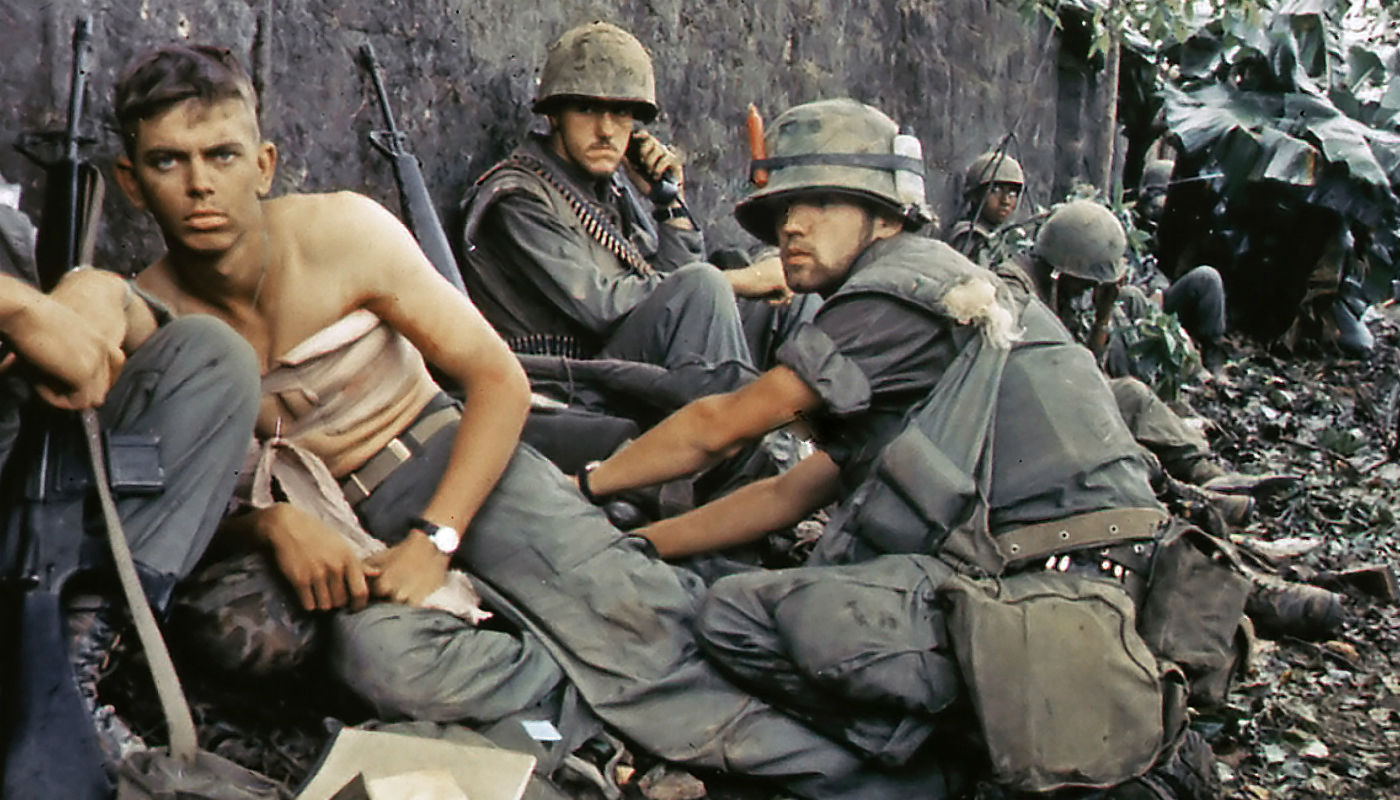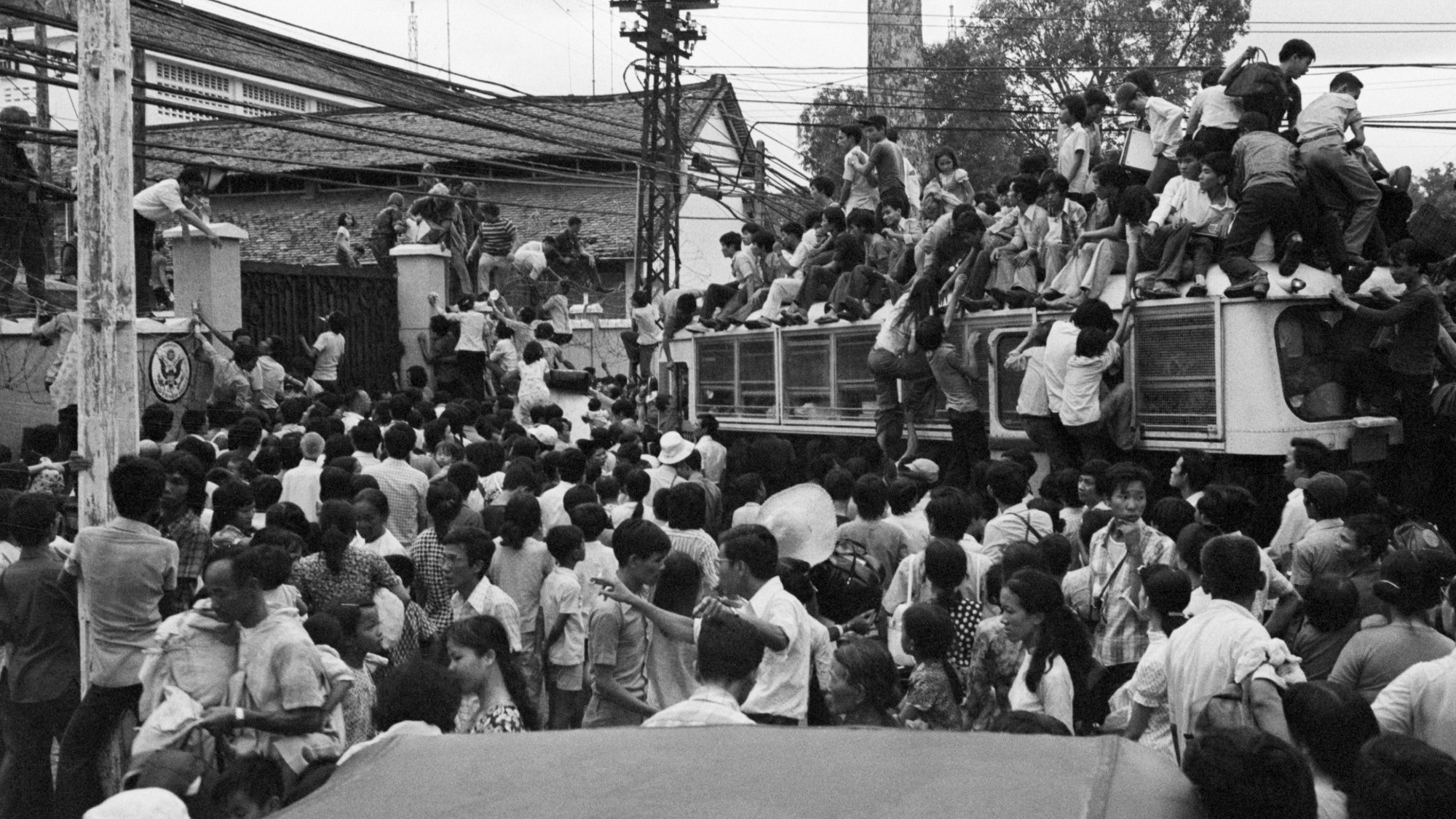How did the Vietnam War start?
How a former French colony became the deadliest Cold War battleground

Today marks 43 years since the Vietnam War, also known as the Second Indochina War, officially came to an end.
The conflict in Vietnam, which began as a colonial uprising in the 1940s, would eventually become a devastating multinational war involving troops from the US, Australia, New Zealand, China, South Korea and Thailand.
So how did it happen?
The Week
Escape your echo chamber. Get the facts behind the news, plus analysis from multiple perspectives.

Sign up for The Week's Free Newsletters
From our morning news briefing to a weekly Good News Newsletter, get the best of The Week delivered directly to your inbox.
From our morning news briefing to a weekly Good News Newsletter, get the best of The Week delivered directly to your inbox.
In 1941, as part of their imperialist ambition for control of Southeast Asia, Japanese forces occupied the French colonial territory of Indochina – modern-day Vietnam, Cambodia and Laos.
France was allowed to remain in nominal control of Indochina until the fall of the pro-German Vichy government in 1945. Fearing an Allied counterattack, the Japanese launched a surprise coup, driving out French colonial troops and administrators, and proclaiming an independent Viet Nam.
In August 1945, Ho Chi Minh, leader of the communist Viet Minh independence movement, was declared prime minister.
For nine years, the French battled to regain their former colony, meeting unexpectedly tough resistance.
A free daily email with the biggest news stories of the day – and the best features from TheWeek.com
At the same time, an anti-communist opposition movement had taken over control of South Vietnam, where the French colonial presence had been strongest.
When the gruelling First Indochina War ended, in 1954, it was agreed that the country should be temporarily partitioned until 1956 when democratic elections would determine the future of a united Vietnam.
Deteriorating relations between the two governing factions meant that the elections never materialised.
In South Vietnam, President Ngo Dinh Diem attempted to consolidate his power through brutal repression of communists, Buddhists and opposition groups.
Meanwhile, Ho’s government formed a guerilla movement, commonly known as the Viet Cong, to infiltrate South Vietnam and foment an uprising.
Why did the US become involved?
After the Second World War, the US and the Soviet Union emerged as rival superpowers, their opposing ideologies competing for domination on the world stage.
The US saw itself as the guardian of Western democracy, capitalism and freedom, a bastion against the spread of godless, tyrannical communism.
Central to Cold War foreign policy was the “domino theory” which held that “if one country fell to Communism, the surrounding countries would fall, like dominoes”, says the website of the John F. Kennedy Presidential Library and Museum.
As the opposing communist and pro-Western factions emerged in Vietnam in the 1950s, the country became a battleground for an ideological proxy war that eventually escalated into a deadly multinational conflict.
How did the US intervene?
The belief in Washington was that a strong show of American backing for Diem’s regime would spook Ho into backing off. In reality, this policy led to a “slippery slope” of escalating US involvement.
The Eisenhower and Kennedy administrations both provided support for Diem’s efforts to defeat the Viet Cong insurgency, including military hardware, financial backing and the deployment of American military advisors to train South Vietnamese forces.
In 1963, the increasingly unpopular Diem was assassinated by a group of army officers. “To help deal with the post-coup chaos, Kennedy increased the number of US advisors in South Vietnam to 16,000,” says ThoughtCo.
In 1964, the Johnson administration approved air strikes on North Vietnam, using a now-disputed attack on two US destroyers as a pretext.
“Each succeeding step was taken in the optimistic belief that a little more effort – a bit more aid, a few more troops, a slight intensification of the bombing – would turn things around by signaling American resolve to stay the course,” says The Conversation.
“By 1965, North Vietnamese offensives left President Johnson with two choices: escalate US involvement or withdraw,” says the History Channel website.
He chose the former. On 8 March 1965, 3,500 US Marines disembarked at Da Nang, the first American combat troops to join the Vietnam War. Another 2.7 million American servicemen, a third of them draftees, would follow them before President Nixon ordered the withdrawal of US forces in 1973.
By the time the war ended, in 1975, with Ho’s communist forces victorious, at least 2.5 million people, including nearly 60,000 US service personnel, had lost their lives.



